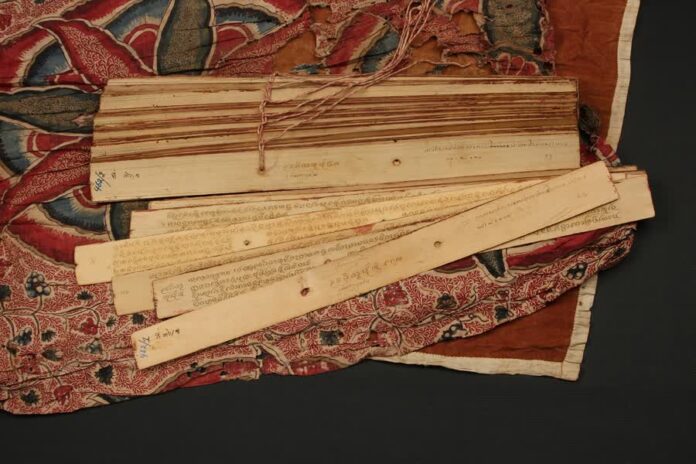Paris, France – The United Nations Educational, Scientific and Cultural Organisation (UNESCO) has recently announced the inclusion of the Palm-Leaf Manuscripts of Phra That Phanom Chronicle on its prestigious list of 64 new items of documentary heritage. These manuscripts have been inscribed on the Memory of the World International Register, signifying their exceptional historical and cultural significance.
The decision to include the manuscripts was made during the 216th session of the Executive Board – Programme and External Relations Commission, held in Paris. This annual event reviews nominations of new documentary heritage items and assesses their worthiness for inscription on the esteemed register.
According to the official description provided on the UNESCO Memory of the World Register website, the Palm-Leaf Manuscripts of Phra That Phanom Chronicle recount the captivating story of the Lord Buddha’s breast bones, which were transported from India to Phra That Phanom for sacred enshrinement. Phra That Phanom is widely recognized as the most revered Buddhist center in the Mekong region, and its rich historical and religious significance is deeply rooted in antiquity.
The collection of manuscripts consists of ten distinct versions, each varying in length and serving different purposes. Over the course of history, these manuscripts were inscribed by various individuals, reflecting the diverse perspectives and cultural influences that have shaped the region. The manuscripts themselves are dispersed across numerous villages, towns, and temples in the Northeast of Thailand and the Mid-Mekong region, embodying the collective memory and spiritual heritage of the local communities.
The Palm-Leaf Manuscripts of Phra That Phanom Chronicle have long been treasured as sacred Buddhist literature and have played a crucial role in preserving the legacy of Buddhism’s arrival and subsequent integration into the Mekong Basins. Copied and disseminated extensively for merit-making, these manuscripts have endured the test of time and have fostered a profound understanding of the region’s religious history. They serve as a testament to the enduring power of Buddhism, blending harmoniously with local beliefs and flourishing for countless generations.
This prestigious recognition marks the Palm-Leaf Manuscripts as Thailand’s sixth UNESCO-listed documentary heritage item, adding to the nation’s ever-growing collection of esteemed treasures. The inclusion of these manuscripts further solidifies Thailand’s position as a custodian of world heritage, showcasing the country’s rich cultural tapestry and its commitment to preserving its historical legacy.
It is worth noting that the Palm-Leaf Manuscripts were one of two nominations submitted by Thailand for inscription on the Memory of the World International Register. The other nomination, Nanthopananthasut Kham Luang, is a significant Buddhist work authored by Prince Narathibet of the Ayutthaya Kingdom in 1736. Although this particular nomination was not included in the latest round of inscriptions, the Thai government has expressed its intention to seek an explanation from UNESCO’s International Advisory Committee (IAC). The aim is to improve documentation and ensure that the Nanthopananthasut Kham Luang manuscript is considered for inclusion in future proposals, thereby enhancing the representation of Thailand’s remarkable cultural heritage on the international stage.




